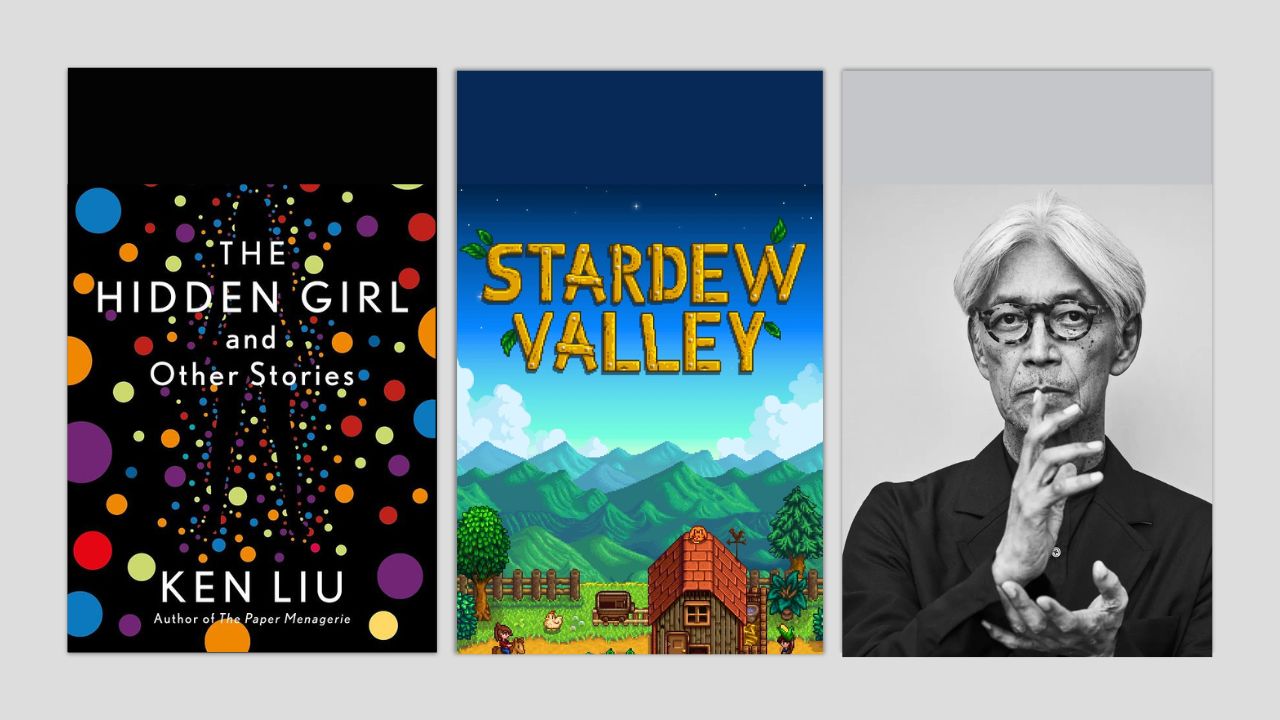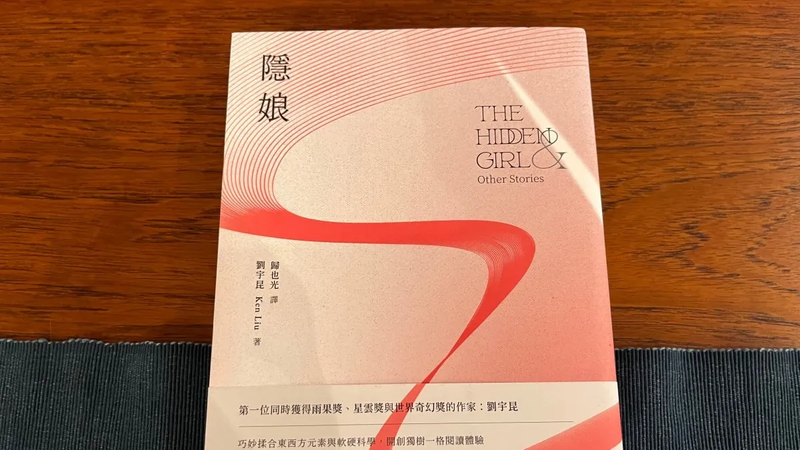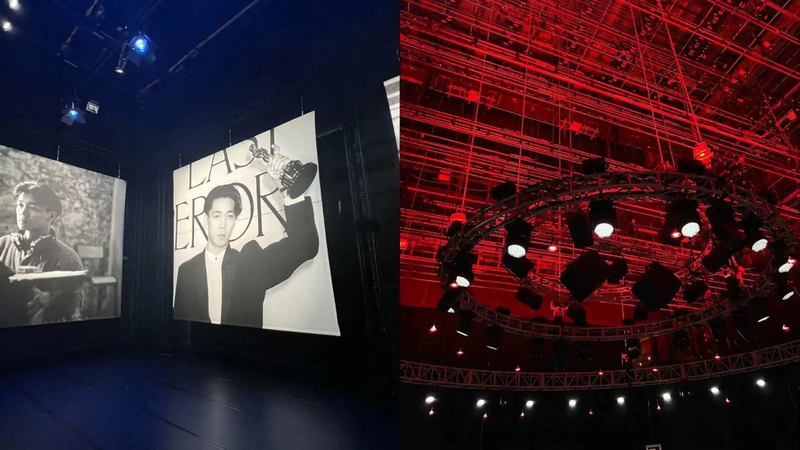Wise Wastes EP1: Stardew Valley Meets Sci-Fi in The Hidden Girl, & Ryuichi's Tune

Headsets | Current Events
7-minute read
Money doesn't disappear; it simply transforms into things we desire. In our new column "Wise Wastes", we share the spending philosophies (or impulses) of the editors at VIVE Post-Wave. Each month, every expense, whether modest or extravagant, has a story behind it; each purchase subtly shifts the direction of our lives. Through these stories and choices, we glimpse into the editors' daily lives, and perhaps find meaning in those seemingly frivolous purchases or time spent (?).
Travis : "The Hidden Girl" and Humanity's Unfinished Mission as a Species
Purchase channel: Books.com.tw (not an independent bookstore)
Purchase price: 432 TWD (only a 10% discount, not a great deal)
In 2013, two Silicon Valley buddies got into a heated debate over AI at a birthday party. One was Google co-founder Larry Page, and the other was the recently loss-making Tesla CEO Elon Musk.
Musk argued that AI would eventually replace us, rendering humans “irrelevant or extinct”; Page didn't entirely disagree with Musk, but he wondered, does it really matter? "Simply be the next stage of evolution," Page reportedly said. When Musk seriously considered launching a crusade to protect humanity, Page even mocked him as a "specist," for only considering humans.
This Silicon Valley anecdote mirrors today's AI development. Ironically, the OpenAI Musk co-founded to prevent Google from destroying humanity has indeed become the company closest to achieving artificial general intelligence (AGI). Unfortunately, Musk no longer owns it. It seems Musk can't be the John Connor he hoped to be, nor the chosen one he envisioned.
The birth of AGI is the "singularity," and humanity's "mission as a species" will end at that moment. "Is this the only path humanity can take?" I often wonder to myself. That was until the Netflix adaptation of "3 Body Problem" came out, which, after some detours, led me to "The Hidden Girl and Other Stories."

"The Hidden Girl" book cover, authored by Ken Liu, who is also the translator of the English version of "The Three-Body Problem."
This April, I'd like to recommend the science fiction short story collection "The Hidden Girl and Other Stories," written by Chinese-American author Ken Liu.
Following the release of the "3 Body Problem" series, many have analyzed why it has become one of the few contemporary science fiction classics written by a Chinese author, unanimously pointing out that translator Ken Liu was instrumental in introducing "The Three-Body Problem" to the Western world. Without delving into the reasons, this factor piqued my curiosity about "The Hidden Girl."
Back to the main topic. Although "The Hidden Girl" is a collection of short stories, many chapters share the same universe—Ken Liu's own "moment of singularity," which indeed brings about a cataclysm for humanity, but takes a different path, unrelated to AGI.
"After the Singularity, most people chose to die." — Staying Behind
In "Staying Behind," Liu refers to the year humans uploaded to machines as the first year of the Singularity, marking the beginning of the battle between "the dead" and "left behind". The dead employ various propaganda tactics to lure humans into logging out of the world and into the digital realm. Families disintegrate, societal functions cease, and the world seems broken. After the Singularity, Musk's envisioned scenario—where humans become irrelevant—didn't happen. Instead, what became irrelevant were the institutions, societies, and nations that humans had taken for granted and that were gradually crumbling.
All this sets the backdrop for the short stories "The Gods Will Not Be Chained," "The Gods Will Not Be Slain," and "The Gods Have Not Died in Vain," taking readers to time before the Singularity. The stories discuss father-daughter relationships, a father with a terminal illness who becomes a superintelligence, a god, through a secret surgery involving a complete scan, encoding, and reconstruction of the brain, and "consciousness uploading." Big companies also start a technological race to initiate the era of eternity, with digital deities scheming behind national powers, reminiscent of Greek mythology. This is what happened around the first year of the Singularity.

"The Hidden Girl" is a short story collection, but many chapters share the same universe—Ken Liu's own "moment of singularity."
As expected, humans eventually lose the battle against the dead, and everyone is urged to log into the metaverse. Thus, they escape into digital eternity, and everyone becomes a god. What kind of new life will humanity embrace after transitioning from carbon-based to silicon-based life forms? What will the world and society look like? More importantly, is such a future something we should look forward to? Ken Liu writes across dimensions in "Altogether Elsewhere, Vast Herds of Reindeer" and spans a million years in "Seven Birthdays," unleashing boundless imagination that is utterly thrilling. I won't spoil this part; it's left for those destined to discover it by purchasing the book themselves.
Gladys : Escaping to "Stardew Valley"
Purchase channel: Steam
Purchase price: 238 TWD (original price 398 TWD, bought at 60% off during a summer sale)
After much deliberation about what to recommend—whether it be household items, kitchenware, or must-buy Japanese snacks (or is that actually what you're more interested in?)—I finally decided that last month's most worthwhile recommendation for everyone is the 1.6 update of "Stardew Valley."
 Playing Stardew Valley on the Steam Deck is a perfect match!
Playing Stardew Valley on the Steam Deck is a perfect match!
Simply put, "Stardew Valley" is an open-ended farming game released in 2016 by the incredibly talented independent developer ConcernedApe (real name Eric Barone). At this point, you might wonder why I'm recommending this somewhat historical pixel-art game. Although it appears to be a farming game on the surface, anyone who has played it knows that "Stardew Valley" offers much more than just planting crops and raising cattle. The game's premise is that the protagonist, seeking to escape a soul-crushing corporate life, takes over their grandfather's farm to live a rural life. There are various ways to earn income in the game, including farming, fishing, foraging, mining, fighting monsters, cooking, socializing, and of course, numerous side quests to slowly get to know this charming and mysterious town.
Stardew Valley is a true sanctuary; when you think you can escape a corporate drone's life inside, you might end up working harder than at your day job, easily racking up hundreds of hours of gameplay.
However, the impressive part is that "Stardew Valley" keeps breaking its own records. Players can enjoy the developer's meticulous updates for just over 300 TWD, and these updates aren't just bug fixes but are DLC-level (with hundreds of items in the changelog). Recently, "Stardew Valley," which just celebrated its eighth birthday, not only sold over 30 million copies but also reached a record of 230,000 concurrent players farming online after the 1.6 update.
 You can also invite friends to farm online, up to eight players.
You can also invite friends to farm online, up to eight players.
Frankly, it's hard to pinpoint what I love most about "Stardew Valley." Perhaps the most valuable aspect is the overall design, which is detailed and well-rounded enough to prevent any sense of tedium, no matter how you play. After a tumultuous day, just opening the game and hearing the familiar sound of birds chirping brings an indescribable sense of comfort.
It's something like this:
Oren : Reunion in "KAGAMI"
Purchase channel: OPENTIX (no more shows available)
Purchase price: 2500 TWD
Last month, Taipei was very much in the spirit of Ryuichi Sakamoto.
The 2024 TIFA at the National Theater and Concert Hall featured the MR performance "KAGAMI," while cinemas screened "Ryuichi Sakamoto: OPUS," directed by his son. I watched the former and, before entering (and after comparing the nearly tenfold price difference), pondered whether there was any difference between experiencing "Ryuichi Sakamoto" through MR and seeing him on the screen.
 On the left is a handsome photo of Ryuichi Sakamoto holding his Oscar, and on the right is the light track in the MR area, which appears a bit magical.
On the left is a handsome photo of Ryuichi Sakamoto holding his Oscar, and on the right is the light track in the MR area, which appears a bit magical.
The first difference, I believe, is the sense of ritual. Before putting on the MR glasses, we were guided through an exhibition area filled with photos of Ryuichi Sakamoto, with a video in the center showing him recording environmental sounds in the Arctic. Sakamoto described how he "fished" for those delicate sounds of flowing water on the ice. Each fishing expedition produced different sounds, just as we cannot step into the same river twice. To some extent, this is the significance of a live experience. However, as a machine-age replica and representation, can MR technology compare to live listening? I'm skeptical.
The second difference might be a kind of (illusory) intimacy. Once seated and wearing the Magic Leap 2 glasses (light indeed, but the operating noise was somewhat intrusive in a concert setting), Sakamoto appeared in the darkness, playing just for me (and the dozens of others present). Instantly, I felt as if I had stepped into a private music salon. We could move around freely, but we had to be careful not to bump into others, navigating only by the peripheral vision provided by the glasses. I moved to Sakamoto's left side, curious to see if the left-handed professor really had the rumored exceptional dexterity in his little finger. What I found, I'll leave unsaid. This is the intimacy of "KAGAMI," after all, the professor was performing just for me.
In addition to bringing Sakamoto to life, MR also allowed the environment to interact with "him," with each piece accompanied by different effects. For example, a tree with its roots grew out of the piano, a window above cast a beam of light, and the New York cityscape unfolded before me like a scroll... However, these were mostly visual embellishments. The true essence of "KAGAMI" was having Ryuichi Sakamoto right in front of me, allowing us to say goodbye to him. Like the last piece, written after hearing of the death of Bernardo Bertolucci, with whom he collaborated on "The Last Emperor," and performed at his funeral, "BB" has never been recorded or publicly released. From now on, this piece can only be heard when Sakamoto performs in MR, time and time again, countless times.
I must honestly say that the MR technology was flawed, with Sakamoto's fingers sometimes experiencing frame drops, image distortions at certain angles, and the "heat sensation" and operating noise of the Magic Leap 2 processor. But before the show, the announcement said: We understand the technology isn't perfect, but we still strive to make the impossible possible. I believe MR technology is indeed a viable direction for music-related performances.
After the show, walking on the streets of Taipei as the summer heat began to rise, "Merry Christmas Mr.Lawrence" played in my earphones, and I remembered that this city, like Java, actually has no snow—recording is also a technology that turns the once impossible into the possible.


